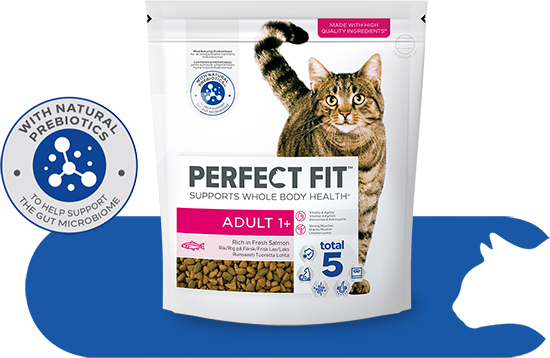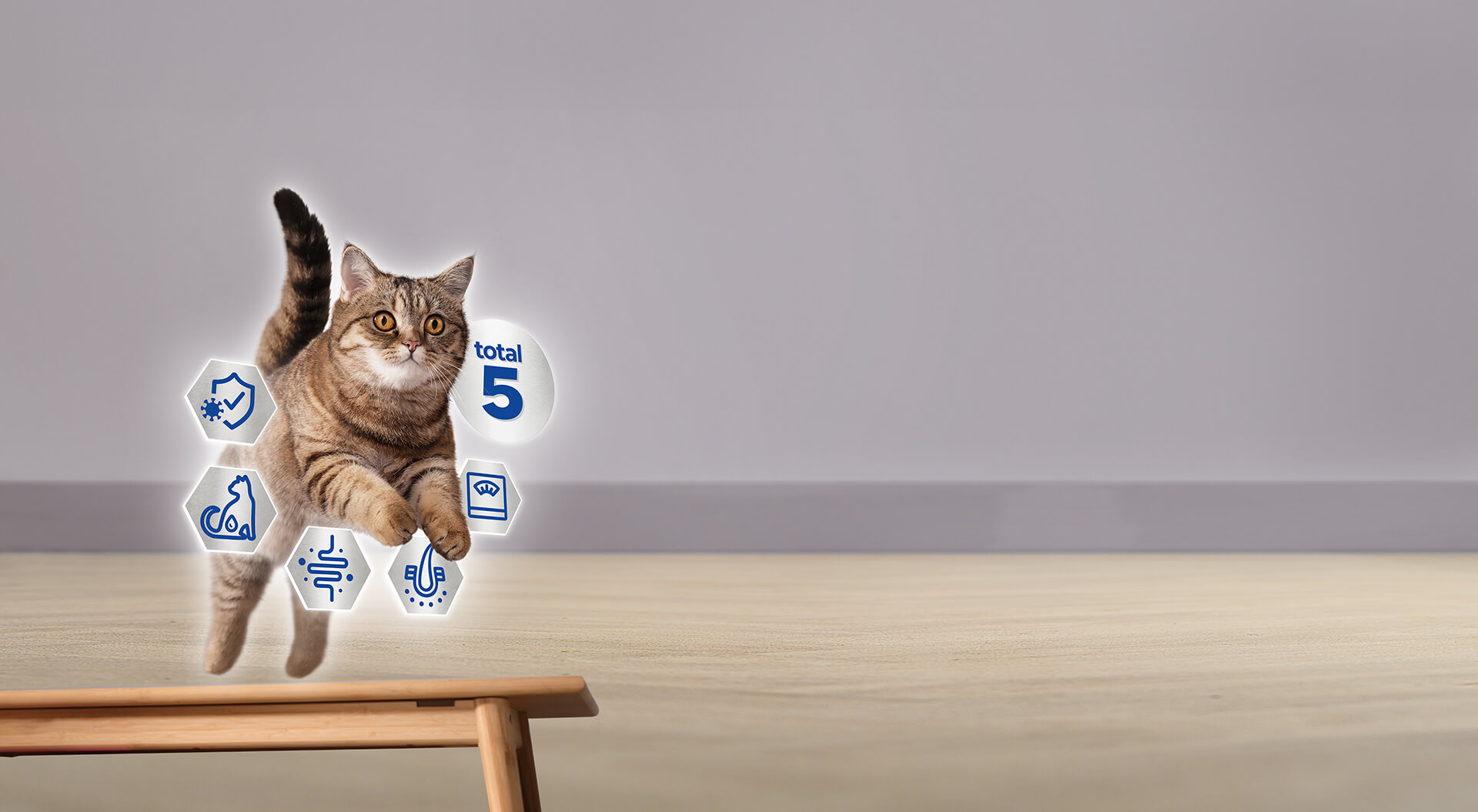SUPPORTS WHOLE BODY HEALTH
Developed with our Waltham Petcare Science Institute vets and pet nutritionists, each delicious PERFECT FIT™ recipe contains a unique formula, which supports your cat's whole body health. And, to bring out their unique best everyday, each tasty recipe also delivers additional health benefits, tailored specifically to their age or lifestyle. PERFECT FIT™ combines 5 benefits addressing 5 of the most common health needs of cats in its PERFECT FIT™ Total 5 formula.
Developed with our Waltham Petcare Science Institute vets and pet nutritionists, all PERFECT FIT™ recipes combine 5 benefits addressing 5 of the most common health needs of cats in its PERFECT FIT™ Total 5 formula.





























